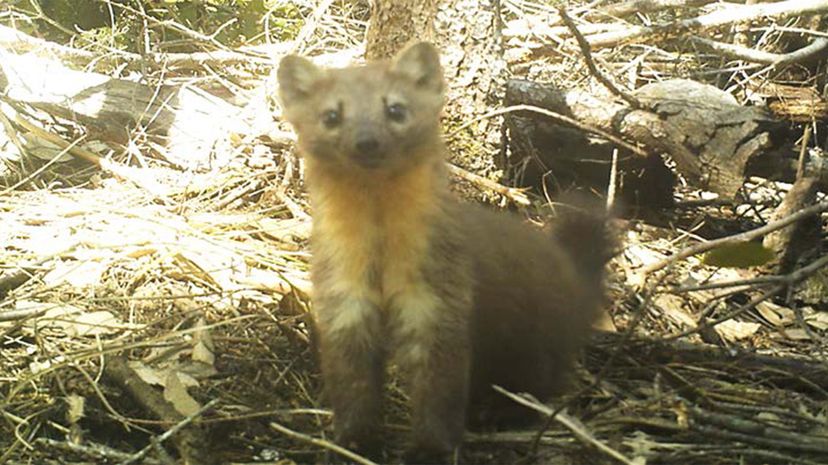
For millennia, wildlife and human agriculture have had a rocky relationship. These days, the Humboldt marten (Martes americana humboldtensis or Martes caurina humboltensis), a member of the weasel family thought to be extinct until 1996, is battling a new foe: marijuana farming.
According to the Center for Biological Diversity, the pressures on this deep-forest dweller — and what initially drove them to the brink of extinction — have been logging, trapping and general over-development of their forest habitat. Although only around 300 of these feisty, adorable little mustelids (mammals of the weasel family) exist in the wild, these are split into three smaller populations of about 100 each. A study published in the April 4, 2018 open access journal PeerJ concluded that the death of just two or three individuals could lead to the collapse of an entire population.
Advertisement
Enter, the California marijuana farmer. Between 4,000 and 15,000 legal and illegal pot farms are thought to be in Humboldt County, California alone. Cannabis, like any other crop, needs sunlight, which often requires the removal of the stands of trees that make up the Humboldt marten's precious, dwindling habitat. In addition, the use of anticoagulant rodenticides, which kill the rodents that chew the farmers' plants and watering lines, make their way through the food web (made up of many interconnected food chains), killing the rodents and any predators that eat them — namely the Humboldt marten.
The Center for Biological Diversity and four other conservation groups have filed petitions with the Oregon Department of Fish and Wildlife to ban the trapping of the Humboldt marten in Oregon. The State of California is currently considering protecting it under the state's Endangered Species Act.
Advertisement
